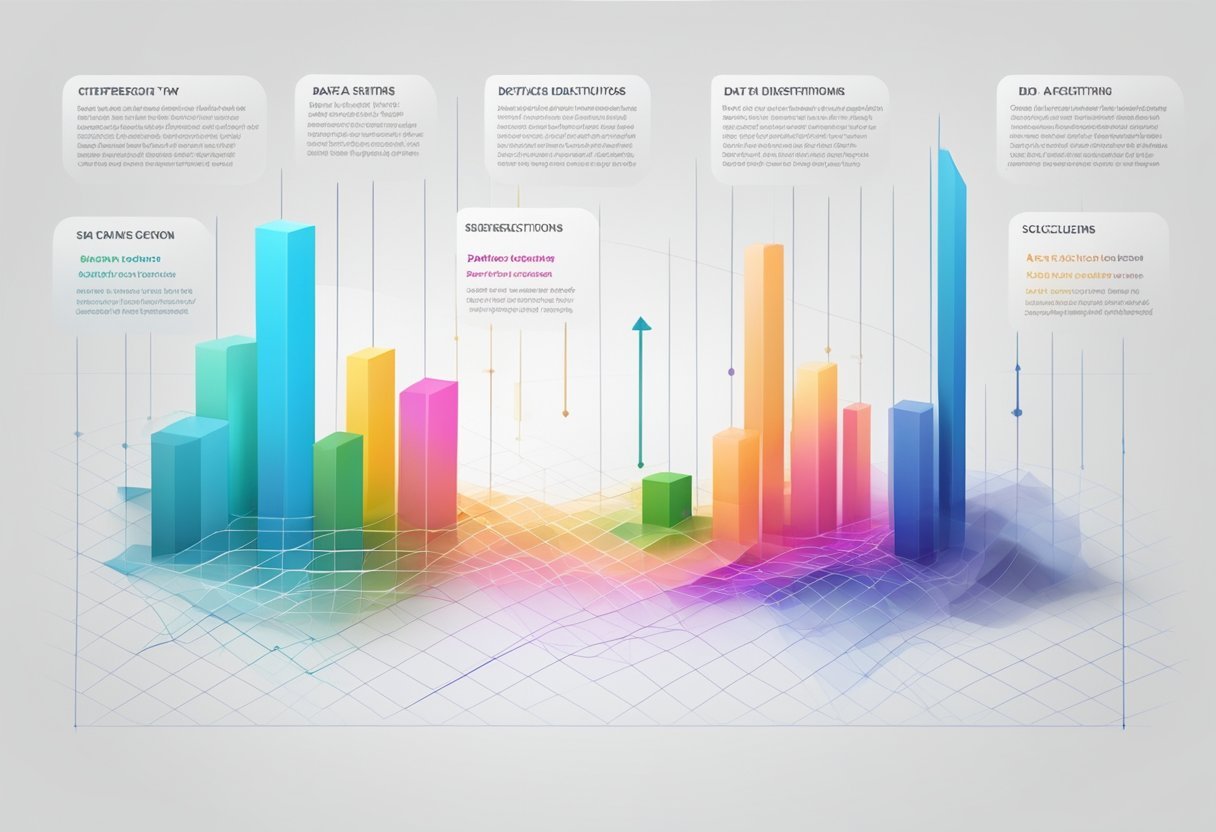Getting Started with Pandas for Data Science
Pandas is a powerful library in Python used for data manipulation and analysis. It’s valuable in data science for handling data frames, similar to tables in databases.
To install Pandas, use pip, a package manager for Python. Open your terminal and run:
pip install pandas
Key Features of Pandas:
-
DataFrames: Pandas offers DataFrames, a two-dimensional data structure with labels. These are essential for data science tasks.
-
Data Cleaning: Pandas simplifies handling missing values and removing duplicates, which is crucial for clean datasets.
-
Data Operations: Common operations include filtering, grouping, and merging datasets. These are vital in preparing data for machine learning.
For those interested in machine learning and deep learning, Pandas integrates well with libraries like scikit-learn and TensorFlow. It efficiently preprocesses data, making it ready for complex algorithms.
Example: Importing and Using Pandas
import pandas as pd
# Creating a DataFrame
data = {'Name': ['Alice', 'Bob'], 'Age': [25, 30]}
df = pd.DataFrame(data)
# Display the DataFrame
print(df)
This small code snippet demonstrates how to create and display a DataFrame. Pandas saves time and effort, allowing analysts to focus on data insights rather than data wrangling.
To get more information about starting with Pandas, the book Learning Pandas can be a helpful resource.
Understanding Data Types for String Operations
When working with string data in pandas, understanding the differences between the ‘object’ dtype and the newer ‘string’ dtype is crucial. These types handle string operations differently, offering distinct advantages and capabilities. Ensuring the correct dtype selection can optimize data processing and analysis tasks effectively.
Working with the ‘object’ Dtype
In pandas, the ‘object’ dtype is often used for columns containing strings. It’s known for its flexibility because it can store any data type. When dealing with strings, this dtype allows for easy implementation of standard Python string methods on each element of a series or dataframe.
However, using ‘object’ dtype for strings may lead to inefficiencies. It lacks optimization for handling large text data, which could impact performance in extensive datasets. Memory usage is another consideration, as this dtype may not be as efficient as dedicated string types.
In practice, converting a dataframe column to the ‘object’ dtype is straightforward and involves directly assigning this dtype to the relevant column. For instance, if a user loads mixed data into a series, pandas might automatically assign the ‘object’ dtype.
Introduction to ‘string’ Dtype with pd.StringDtype()
The ‘string’ dtype, introduced in more recent versions of pandas, offers advantages tailored for string data. Created using pd.StringDtype(), this dtype provides better memory and performance optimization compared to the ‘object’ dtype. It represents strings more uniformly, leading to improved operations on large datasets.
One significant feature is that it handles missing data as NaN by default, making it easier to manage datasets that include null values. The ‘string’ dtype ensures optimizations for vectorized string operations, enhancing computational efficiency when large text blocks are involved.
To convert an existing column to this dtype, users can utilize astype(pd.StringDtype()), which takes advantage of the benefits associated with native string operations and improved performance features.
Essential String Methods in Pandas
Pandas offers a variety of string methods that are crucial for efficiently handling text data. Understanding these methods, such as using the str accessor for accessing string functions, cat for concatenation, and methods like replace and extract, can greatly enhance data manipulation capabilities.
Fundamentals of String Accessor ‘str’
The str accessor in Pandas is a gateway to many string operations. It allows users to apply functions like lower(), upper(), and strip() directly to text data in Pandas Series.
For example, str.lower() converts text to lowercase, while str.upper() changes it to uppercase. This accessor is essential for transforming text data efficiently and neatly.
Using str.contains, users can filter data by checking if strings contain a specific substring. It returns a boolean Series, indicating the presence of the substring.
Overall, the str accessor simplifies string manipulation tasks, making operations intuitive and concise.
Using the ‘cat’ Method for Concatenation
The cat method in Pandas is used for concatenating strings in a Series or DataFrame. By default, it combines strings without any delimiter, but users can specify a separator with the sep parameter.
For instance, series.str.cat(sep=', ') joins strings with a comma and space between them.
This method is particularly useful when dealing with text columns that need to be combined into a single string. It supports concatenation along the index or a specified column, allowing for flexible data arrangement.
Replacing Substrings with ‘replace’ Method
The replace method in Pandas is indispensable for modifying text data. It substitutes specific parts of a string with new content.
For example, series.str.replace('old', 'new') replaces occurrences of ‘old’ with ‘new’ in each string.
This method is powerful in cleaning datasets, as it can handle regular expressions, enabling complex pattern matching and replacements.
By using replace, data analysts can swiftly correct data inconsistencies or standardize formatting across text data. Its ability to support regex expands its functionality beyond basic string replacement.
Extracting Substrings with ‘extract’
The extract method leverages regular expressions to pull out specific patterns from strings.
Using series.str.extract('(d+)'), for example, one can extract digits from each entry in a Series.
This approach is useful for parsing structured text data, such as extracting phone numbers or dates from unstructured text.
extract creates a DataFrame where each match of the pattern is a column. Advanced users can define groups in their regex patterns to capture multiple parts of a string. This method not only facilitates data extraction and parsing but also helps prepare datasets for further analysis.
Querying String Length with ‘len’ Method
The len method calculates the length of each string in a Series.
With series.str.len(), users obtain a numerical representation of string lengths, enabling analysis such as filtering based on text length or comparing sizes.
This method is straightforward but crucial for tasks requiring an understanding of text complexity or volume. By utilizing len, data scientists can perform investigations like detecting abnormally short or long entries, contributing to better data quality control.
Counting Occurrences with ‘count’
The count method in Pandas counts the number of occurrences of a specified substring within each string in a Series.
Executing series.str.count('pattern') gives a Series with counts of ‘pattern’ in each entry, aiding in frequency analysis of text data.
This method is beneficial for quantifying specific features or words in text, providing insights into data patterns and trends. The ability to count occurrences accurately helps in tasks like sentiment analysis or keyword frequency assessment, expanding the scope of textual data exploration.
Enhancing Data Manipulation with Vectorized String Operations
Vectorized string operations in pandas provide robust tools for manipulating text data efficiently. These operations allow users to transform, clean, and prepare data for analysis by performing actions like changing the case of strings or trimming unnecessary spaces from the data.
Capitalizing and Converting Case with ‘upper’, ‘lower’, and ‘swapcase’
Changing the text to the desired case helps standardize data, making it easier to compare and sort. The str.upper() method converts all characters in a string to uppercase, useful for keywords or headers.
Conversely, str.lower() changes all characters to lowercase, ensuring consistency across datasets.
For more complex case conversions, str.swapcase() flips the case of each character, converting lowercase letters to uppercase and vice versa. This can be particularly useful for certain data cleaning tasks where retaining the original mixed case format is beneficial.
These changes are performed across entire columns using vectorized operations, which are both faster and more efficient than looping through each entry individually. Leveraging these functions facilitates smoother and more uniform data processing, vital for subsequent analysis.
Trimming Whitespaces with ‘strip’, ‘rstrip’, and ‘lstrip’
Whitespace can often disrupt data processing by causing match errors or inconsistent analyses. The str.strip() method removes leading and trailing spaces from text, crucial for ensuring text alignment across datasets.
If only the spaces at the end or the beginning need removal, str.rstrip() and str.lstrip() are ideal, targeting trailing and leading spaces respectively.
These operations contribute significantly to data cleaning, helping to maintain data integrity.
Applying these functions enables users to handle unexpected spaces efficiently, reducing errors and simplifying data manipulation tasks. These tools are essential in preparing text data for more advanced analysis and ensuring its quality and reliability.
Manipulating and Transforming Text Data in DataFrames
Manipulating and transforming text data in DataFrames is essential for data analysis. It involves using functions to split and join strings, match patterns, analyze string lengths, and encode categorical data.
Splitting and Joining Strings
In data analysis, the ability to split and join strings is fundamental. Pandas provides the split() function, allowing users to separate strings into a list of substrings based on a specified delimiter. This is useful when dealing with text data, such as full names or addresses, that need to be broken down into parts.
For recombining, the join method is used, which merges elements from a list into a single string by a specified separator. This process is often required after data cleaning or transformation when combining data back into a cohesive format. These functions streamline the handling of complex text structures within DataFrames and enable efficient data preparation.
Using ‘contains’, ‘startswith’, ‘endswith’ for Pattern Matching
Pattern matching is crucial for identifying specific text patterns in a DataFrame. Pandas offers functions like contains, startswith, and endswith to perform these operations.
The contains function is powerful for checking if a substring exists within each entry of a series. It can be particularly efficient when used with regular expressions, providing flexible and precise pattern searching.
The startswith and endswith functions are used to verify if entries begin or end with certain strings, respectively. These methods are vital for text data validation or when filtering records by specific attributes found in string fields, promoting robust and targeted data analysis.
Utilizing ‘len’ for String Length Analysis
The len function helps analyze string lengths within a DataFrame column. By applying this function, users can quickly determine the number of characters in each entry, which is crucial for ensuring data consistency and identifying outliers.
For instance, checking that phone numbers or IDs conform to a standard length can flag potential errors in data entry.
Using len efficiently supports data quality checks and validation, ensuring that the dataset maintains its integrity throughout the analysis process.
Applying ‘get_dummies’ for Categorical Encoding
When working with textual categorical data, the get_dummies function in Pandas becomes highly relevant. It transforms categorical variables into a DataFrame of binary variables, enabling models to handle the data more effectively.
This process, known as one-hot encoding, is particularly important when feeding the data into machine learning algorithms that require numerical inputs.
Employing get_dummies helps preserve the categorical information while enabling powerful analytics and predictive modeling. This transformation is essential in preparing textual data for further computational analysis, ensuring that all potential insights are comprehensively captured and analyzed.
Advanced Text Data Techniques
In data science with Pandas, handling text data often involves sophisticated techniques. These include regular expressions, managing missing data in text columns, and processing numerical values within strings. Mastering these techniques is crucial for efficient data manipulation and analysis.
Regular Expressions and Pandas
Regular expressions are powerful tools for working with text data in Pandas. They allow users to perform complex searches and manipulations. Functions like str.extract and str.contains are useful for finding patterns within text columns. For instance, str.contains can find matches by setting parameters such as ignorecase.
Using find or findall, one can locate patterns and extract relevant data efficiently. The match function further refines this by ensuring precise alignment with the search criteria. Regular expressions significantly enhance data cleaning processes by allowing flexible string matching and replacing operations.
Handling Missing Data in Text Columns
Missing data in text columns can complicate analysis. Pandas offers methods to address these gaps, such as fillna() to replace missing values with specified content. Another tactic involves using indicator variables through get_dummies(), which can highlight whether a text entry exists.
When data is missing due to formatting or input errors, functions like isalnum, isalpha, and isdecimal help in identifying irregularities. These approaches support maintaining dataset integrity by providing straightforward solutions to handle incomplete information and clean the data before further processing.
Processing Numerical Values in String Data
Strings in dataframes may contain numerical values, often mixed with text, necessitating special handling. Functions like isdigit() and isnumeric() help identify numeric strings within text data.
Pandas provides conversion options using astype, facilitating transformation of recognized numeric strings into actual numerical data types. Extracting numbers within strings can be done with regex patterns through str.extract, boosting flexibility in transforming and analyzing data. These operations ensure that numbers embedded in strings are efficiently processed, aiding accurate computations and analysis.
Optimization Tips for String Operations

When working with pandas for data science, optimizing string operations can enhance performance significantly. These optimization techniques help make string processing more efficient.
Use vectorized string operations in pandas instead of looping through each row. The vectorized methods are faster and allow operations directly on entire columns.
Avoid creating copies of data unnecessarily. Work with the existing data by referencing it rather than duplicating, which saves memory and processing time.
When selecting specific parts of strings, the .str accessor is useful. Here’s a comparison of a loop versus vectorized operation:
| Task | Method | Example Code |
|---|---|---|
| Extract substring | Loop | for val in df['col']: val[:5] |
| Vectorized | df['col'].str[:5] |
Working with regex in pandas can be a performance bottleneck. If possible, simplify regular expressions and use specific string methods like .startswith() or .endswith().
Convert strings to categorical data types when there are a few unique values. This reduces memory usage and can make operations faster.
Trim and clean string data using vectorized functions like .str.strip(), .str.lower(), and .str.replace(). These make data consistent and ready for analysis.
Keeping these tips in mind can improve the handling of string data in pandas, leading to better performance and more efficient analysis.
Case Studies: Applying String Operations in Real-World Scenarios
String operations are crucial in data science for refining data. One use case is in data cleaning, where experts deal with messy datasets. They often start by removing unnecessary characters or adjusting case sensitivity. This ensures the data is uniform and ready for further analysis.
Example: Converting text columns to lowercase helps maintain consistency. This small change can make data merging and comparison more accurate.
In data manipulation, string operations reshape and filter data. Analysts might split strings into multiple columns or extract specific information. This allows them to tailor datasets to their analysis needs, making it easier to identify trends and patterns.
Example: Using operations to extract year and month from a date string is useful for time-series analysis.
Machine learning relies on cleaned and well-structured data. String operations assist in feature engineering by transforming text data into a usable form. For instance, creating numeric data from categorical text values is a common step before building models.
Table: Common String Operations
| Operation | Purpose |
|---|---|
lower() |
Convert text to lowercase |
split() |
Break a string into parts |
strip() |
Remove whitespace from text |
replace() |
Replace parts of a string with others |
These string operations highlight the range of techniques that enhance data analysis processes. They increase efficiency and accuracy, ensuring that datasets are clean, organized, and optimal for decision-making.
Best Practices for String Operations in Data Analysis
String operations in data analysis are important for clean and accurate data manipulation. Applying certain practices can enhance data quality and analysis efficiency.
Data Cleaning: Start by checking for missing or null values in your dataset. Functions like fillna() or dropna() in pandas can handle these efficiently.
Consistency: Ensure string consistency. Convert all strings to lowercase or uppercase using methods like lower() or upper(). This helps in maintaining uniformity across datasets.
Trimming Whitespace: Remove unnecessary spaces with the strip() function. This avoids errors in data comparison and aggregation.
Search and Replace: Use replace() to update or clean specific string patterns. This can be helpful in correcting spelling errors or standardizing data entries.
| Function | Usage |
|---|---|
lower() |
Convert strings to lowercase |
strip() |
Remove leading and trailing spaces |
replace() |
Replace parts of a string |
Splitting and Joining: Use split() and join() for breaking and merging strings. This is useful when dealing with CSV files or rearranging data formats.
Extracting Patterns: Utilize regular expressions with str.extract() to filter or categorize data based on specific patterns.
Data Manipulation: Leverage vectorized string functions in pandas for efficient data manipulation. They offer performance benefits over Python-based loops.
Incorporating these practices not only improves the quality of analysis but also enhances the reliability of the results. Adopting these methods ensures smoother workflows in data science projects involving string manipulation.
Leveraging String Methods for Data Cleaning
String methods are vital in data cleaning, especially for text data. These methods help to ensure data uniformity and accuracy.
Strip Method:
Stripping helps in removing unwanted spaces. The strip() function eliminates spaces from the beginning and end of a string. This is useful when dealing with data entries that have inconsistent spacing.
Replace Method:
The replace() function swaps parts of a string with another. It is often used to correct misspelled words or replace unwanted characters. For example, replacing hyphens with spaces can enhance readability in datasets.
Lower and Upper Methods:
Converting text to lowercase or uppercase ensures uniformity. The lower() and upper() methods change the case of strings, making comparisons and sorting straightforward.
Concatenate Strings:
Combining strings is essential when joining data fields. Using concatenation, different string parts can be merged, allowing for complete data entries from multiple sources.
Replacing Substrings:
Replacing specific substrings can correct and format data. For example, replacing abbreviations with full forms improves clarity.
Extracting Substrings:
The ability to extract parts of a string is valuable for isolating relevant data. Functions that allow substring extraction enable users to pull specific information, such as dates or codes, from larger text entries.
Using these string methods in data cleaning improves data integrity and prepares it for analysis. These techniques ensure consistent and reliable data, essential for any data science project.
Integrating Pandas String Operations with Machine Learning Pipelines
Pandas string operations are vital for processing text data in data science projects. This process, often called feature engineering, transforms raw text into valuable features for machine learning models. Using functions like str.lower(), str.replace(), and str.contains(), data analysts clean and normalize text data efficiently.
Incorporating these operations into machine learning pipelines streamlines data processing. Pipelines ensure that the same data transformation steps are applied to both training and test data, maintaining consistency. This approach reduces errors and simplifies the codebase, making models more robust.
For example, transforming a text column with Pandas string functions helps in extracting important features such as the presence of keywords or patterns. These derived features can be included as inputs for machine learning models, enhancing predictive accuracy.
Pandas’ integration with libraries like scikit-learn allows for seamless use of these features. By using ColumnTransformer or FunctionTransformer, string operations can be automated in the pipeline. This integration ensures the pipeline remains flexible and easy to update with new operations or transformations as needed.
This connection between data wrangling with Pandas and modeling with libraries like scikit-learn supports rapid development in data science projects. Utilizing the powerful toolset of Pandas alongside machine learning libraries helps data scientists efficiently tackle complex text data tasks. Learn more about Pandas string operations and machine learning in resources like Hands-On Data Analysis with Pandas.
Frequently Asked Questions

String operations in Pandas are essential for data cleaning and transformation. This section covers common questions on handling strings within dataframes, applying string methods, and managing multiple columns efficiently. It also explores the use of StringDtype and techniques for replacing and splitting strings.
How can I apply string methods to a pandas DataFrame column?
To apply string methods to a column in a pandas DataFrame, one can use the str accessor. This lets users call string functions directly on a Series. For example, converting all characters in a column to lowercase can be done with df['column_name'].str.lower().
What are the steps to perform string manipulation on multiple columns in Pandas?
When manipulating strings in multiple columns, use the apply method along with a lambda function. Iterate over the desired columns, applying string operations as needed. For instance, converting strings to uppercase across several columns involves using a loop or list comprehension with str.upper().
How can I use the StringDtype in Pandas for more efficient string operations?
The StringDtype in Pandas is designed to provide better performance and efficiency when conducting string operations. By converting a column to this type using astype('string'), users can leverage optimized memory usage and improved functionality compared to the traditional object dtype for strings.
What is the correct way to perform a string replace operation in a Pandas Series?
To replace substrings in a Pandas Series, the method str.replace() is used. This function allows specifying the target string and the replacement. For example, to replace “abc” with “xyz” in a series, one would use series.str.replace('abc', 'xyz').
How can I split strings in a Pandas DataFrame and expand them into separate columns?
Splitting strings and expanding them into separate columns is achievable with str.split() combined with the expand=True parameter. For instance, splitting a “Name” column into “First Name” and “Last Name” requires df['Name'].str.split(expand=True), which adds new columns for each component of the split string.
What Are the Best Practices for Plotting Data from a DataFrame That Involves String Manipulation?
When plotting data that involves string manipulation, make sure strings are formatted correctly before visualization. Sorting or grouping by string data should consider string length or content. Also, visual clarity can be improved by trimming or cleaning strings before generating plots. This will help depict the data more accurately.









































